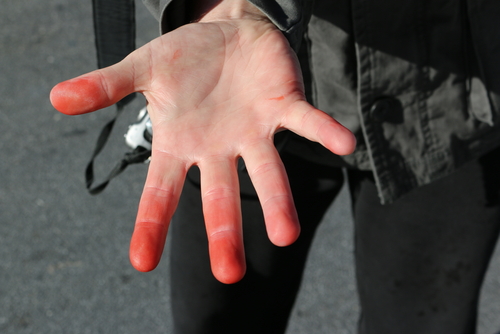Frostbite is a potentially severe condition that affects exposed skin in freezing temperatures, and it’s important for anyone who lives in a cold climate to recognize the signs and symptoms so that it can be treated before permanent tissue damage occurs. While most people know about frostbite, many don’t realize that it occurs in stages, or that the early signs of frostbite are often ignored. Below are some of the symptoms to keep an eye out for if you plan on being outside in extreme weather conditions.
Early Signs
The first warning signs of frostbite are known as “frostnip”. At first, exposed skin will turn red. It may feel extremely cold, followed by sensations of itching, burning, numbness, or stinging, often described as a “pins and needles” feeling, which may persist for a while even after warming up. While frostnip does not cause permanent damage, it is a sign telling you that you need to cover up or find shelter as soon as possible before more serious frostbite sets in. Keep in mind that the most common areas affected by frostbite are the fingers, toes, cheeks, nose, and ears.
Intermediate Frostbite
Intermediate or “superficial” frostbite is characterized by skin that begins to harden and take on a waxy or shiny appearance, as well as a yellowish or pale white coloration. The skin may begin to feel warm at this stage, which is a sign that tissue damage is beginning to occur. It is critical to cover up exposed skin and get to a warmer area at this point. After warming up, you may notice small blisters forming on the frostbitten skin; while this usually only causes temporary pain, in severe cases the skin may be damaged and even scar as a result.
Severe Frostbite
Severe or “deep” frostbite occurs when tissue below the surface of the skin has been damaged by extreme temperatures. At this stage, you may no longer feel sensations of cold or pain, and it may become impossible to bend your fingers or toes as the joints and muscle tissue are affected. Skin begins to harden even further and turns dark blue or black, which is a sign that the tissue has died. In some cases, extremities that become severely frostbitten will require amputation.
Frostbite can cause severe, permanent tissue damage if the warning signs aren’t recognized early on, and it is vitally important that anyone who spends time in areas with freezing weather be able to spot these symptoms and respond appropriately. Always remember to dress appropriately so that no extremities are exposed to the cold, and have a plan to find shelter in case frostbite symptoms begin to set in.


